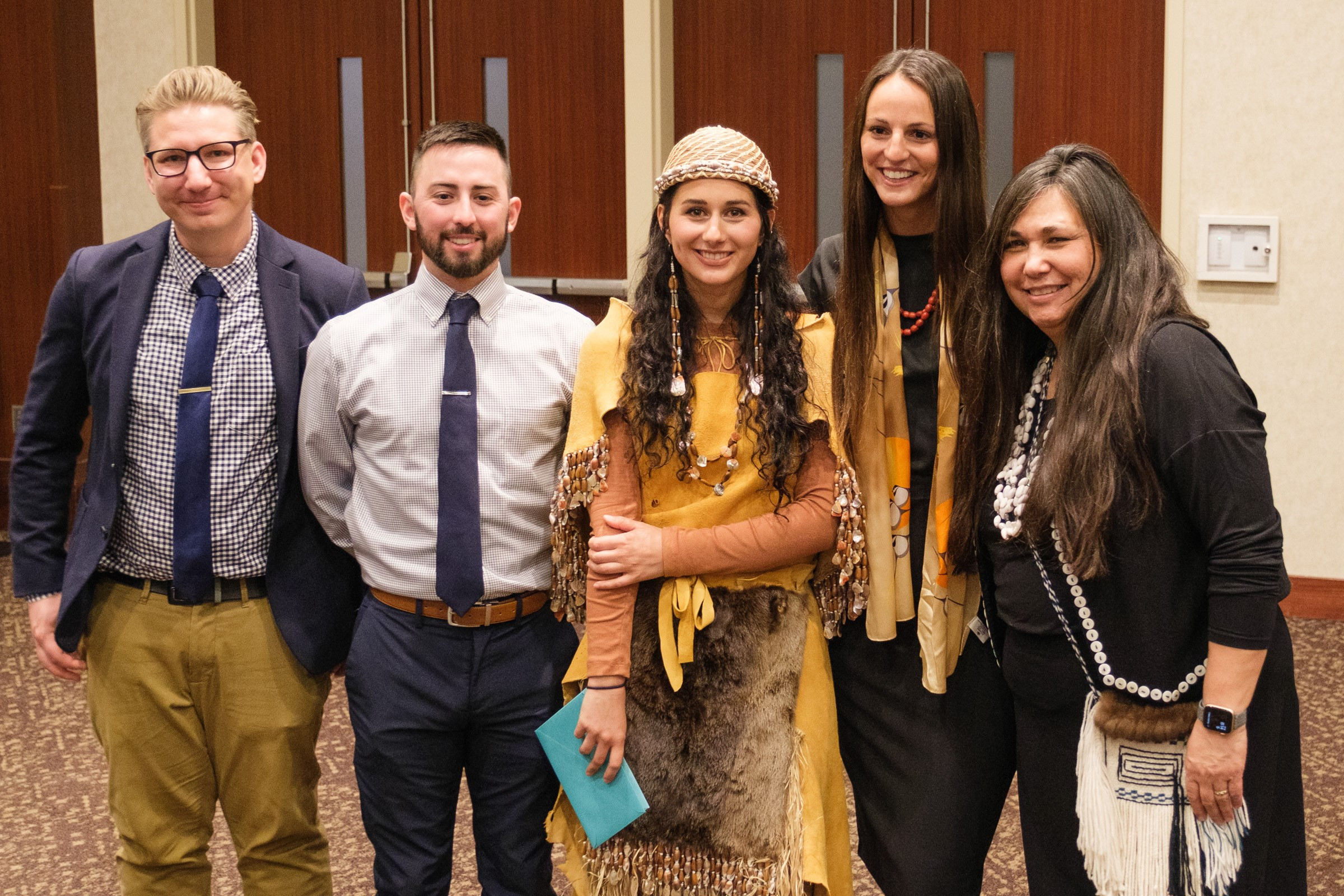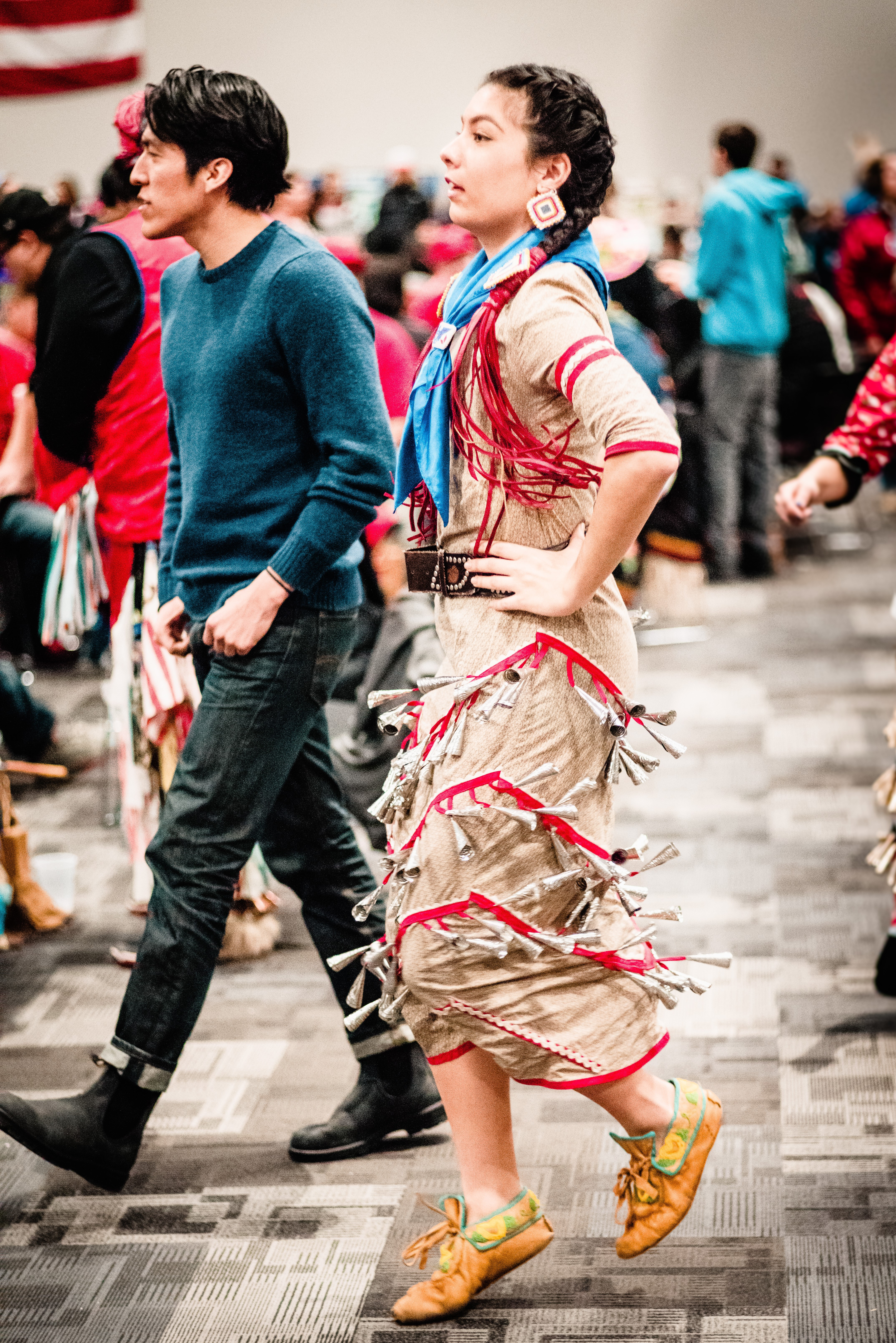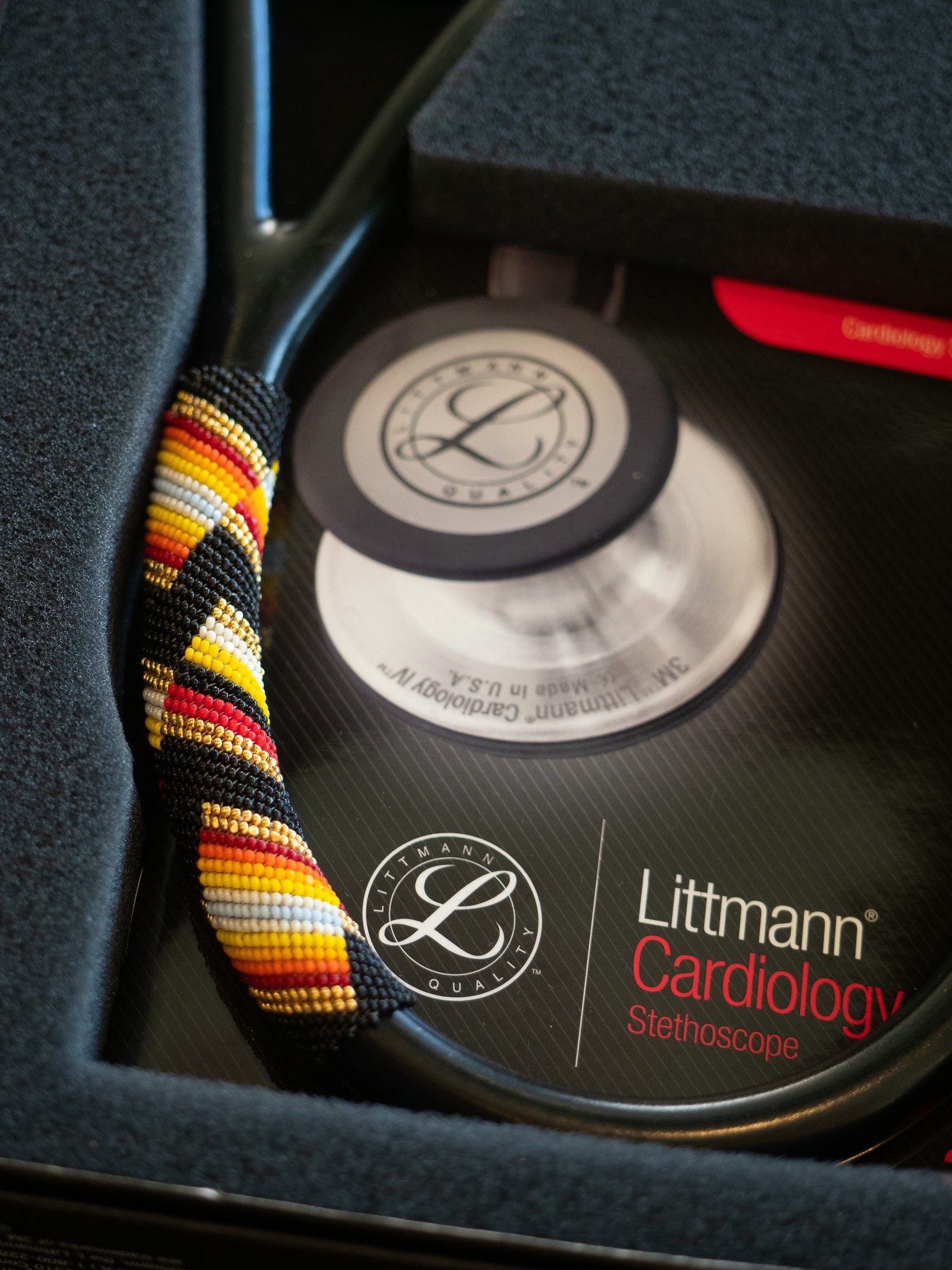
In March of this year, the Josiah Macy Jr. Foundation funded a grant at the Center of American Indian and Minority Health (CAIMH) at the University of Minnesota Medical School, Duluth Campus (UMMSD). This award supports the creation of clinical training sites for medical students and residents with American Indian and Alaska Native (AIAN) patients at Tribal and Indian Health Service clinics and hospitals. The Center conducts the screening, selection, and placement of learners; and prepares the preceptors for their role in supervising learners at different stages of their medical education. The program is a model for other medical schools serving Indigenous communities and patients, as well as for other health professional schools (nursing, pharmacy, etc.). Creating an exportable model to expand clinical opportunities with AIAN patients will increase the number of learners who gain skills in caring for patients from this underserved community.
November is Native American Heritage Month, which recognizes and celebrates the significant contributions that the first Americans made to the establishment and growth of our country. This is a most appropriate month for me to interview Dr. Mary Owen, who serves as the co-Principal Investigator of this project with Dr. Sandra Stover. Dr. Owen recently completed a term as President of the Association of American Indian Physicians and was the recipient of the Association of American Medical College’s Group on Diversity and Inclusion Exemplary Leadership Award.
Here is our conversation:
Holly Humphrey (HH): Can you tell us a little about the Center of American Indian and Minority Health’s history and its mission?
Mary Owen (MO): Since its founding in 1972, the University of Minnesota Medical School, Duluth Campus (UMMSD) has been attracting and retaining Native American medical school students. Dr. Gerald Hill and Dr. Joy Dorscher, former Directors of the Center of American Indian and Minority Health (CAIMH), implemented most of the support and retention activities that exist today for Native medical students attending UMMSD. A commonly cited struggle for Native students is being far from their Tribal communities. Most of the work we do at CAIMH revolves around the creation and support of community for Native medical students. Within CAIMH, Native students at UMMSD have a space to gather for studying and meeting. Students also meet at my house and in the community for different activities. Throughout the year students meet with Native alumni and community elders. CAIMH hosts and co-hosts events such as ribbon skirt making and a community sugar bush (maple syrup making). Another important incentive for Native students has been the required curriculum in Native health introduced six years ago by Dr. Melissa Lewis and supported by Drs. Ruth Westra and Alan Johns. These are just some of the supports available for Native American medical students at the University of Minnesota Medical School.
HH: In 2014, the UMMSD was the first US medical school to implement a mandatory medical school curriculum for all medical students on Indigenous health. The curriculum was developed in collaboration with key stakeholders from the community and health care providers at Tribal Clinics. What did you learn and why was this an important initiative for the school?
MO: It is hard to overstate the importance of this initiative. The curriculum was developed with an Indigenous framework. For an entire year, Dr. Melissa Lewis interviewed Native community members about critical elements to include in the course before integrating it into the medical school curriculum. These elements remain relevant and will now become part of an Indigenous Health Pathway that the University of Minnesota Medical School will roll out in 2023 alongside four other pathways. Importantly, much—if not all—of the original Indigenous health curriculum will be introduced to all 240 medical students at the University of Minnesota.
Dr. Sandy Stover and I just completed grading 63 medical student reflections on the Native American Health curriculum. An overwhelming majority of students commented that they learned more about Indigenous people than they ever had throughout their education. Moreover, most expressed a solid understanding of the basis of both Native American health disparities and healthcare systems.
From recent studies, we know that bias and racism continue to impact the care that Native Americans (and many marginalized communities) receive. It is heartening to know that each year the University of Minnesota produces 60-plus future physicians armed with knowledge that can change the outcomes of Native Americans’ encounters with healthcare systems.
HH: The number of medical students who self-describe as American Indian and Alaska Native (AIAN) has decreased by over 30% over the last forty years. Only 0.3% of active physicians reported being AIAN alone or in combination with another race. Your project, funded by the Josiah Macy Jr. Foundation, seeks to address this problem. What strategies and tactics will you employ and why do you think this work is necessary?
MO: This project addresses the result of these statistics. AIAN populations struggle with access to healthcare, in large part because of physician shortages in our communities. Research shows that medical students raised in or with significant experience in each setting are more likely to return to similar communities to serve. Increasing the numbers of AIAN students applying to and matriculating from medical school will increase providers for AIAN communities.
Still, even if we triple the number of AIAN students entering medicine, we will still be significantly understaffed in AIAN-serving clinics and hospitals. It is therefore critical that we increase the knowledge and experience of non-AIAN students and residents to expand the pool of culturally aware physicians who might want to work at AIAN sites Our Josiah Macy Jr. Foundation funded project is so important. It allows us to educate learners rotating through Tribal clinics on how to interact with and provide the best care for AIAN patients.
HH: Can you point to other schools or programs—in the United States or in other countries—which have had success both in expanding the number of Indigenous health care providers and in teaching about Indigenous health care disparities? What can we learn from these exemplars?
MO: New Zealand and Australia are leaders in Indigenous Health curricula. Indigenous scholars in these two countries co-developed Learners in Medical Education (LIME), an Indigenous health curriculum that Australia now requires in all Australian medical schools. Indigenous scholars in the United States are developing a similar curriculum based on the key principles of LIME.
As noted in a previous question, the numbers of AIAN applicants to medical schools remains very low. This is not surprising given the relatively low AIAN high school and college graduation rates. Expanding the numbers of Indigenous health care providers necessitates programming to improve K-16 AIAN graduation rates. Over the past year, several collaborators, including the Association of American Indian Physicians, American Indian Higher Education Consortium (Tribal colleges), Association of Native American Medical Students, and the AAMC, collectively formed the Indigenous Health Education and Resource Task Force (IHEART). IHEART aims to create and support regional collaborations of pathway programs to support AIAN students from kindergarten through postdoctoral-level education. We are in the beginning stages of this work and will not likely see outcomes for years, but until education disparities are addressed at all levels, we have little chance of increasing the numbers of AIAN physicians.
HH: We know that racial and cultural concordance between health care providers and patients improves patient outcomes., Any physician who works in these communities must know how to provide care in a culturally sensitive and collaborative manner, recognizing that some patients have experienced significant trauma. How does your work accomplish this important goal?
MO: Most, not some, AIAN patients have experienced trauma. For this reason, all learners applying for a clinical rotation will be screened for cultural sensitivity. They must pass this basic screening to be eligible to train at a Tribal site.
Additionally, this project includes curriculum that students must complete prior to being placed. Each learner will receive a basic survey of their current knowledge of Indigenous people and healthcare. Their results will determine which coursework they receive before and during their rotation. All the curriculum is being developed in collaboration with the Tribal clinics.
HH: Dr. Owen, you just completed two years as President of the Association of American Indian Physicians. Congratulations on your leadership and your contributions! Can you tell us what you are most proud of having accomplished in this position?
MO: I am most proud of having brought people together to address our common issues and goals. I mentioned IHEART, a group formed to address AIAN education disparities. Another collaboration was with AIAN health professionals, including dentists, nurses, pharmacists, and public health scholars, to collectively address the shortages within our professions. It was also during my tenure that the Association of American Indian Physicians joined with other minority physician groups to form the Alliance of Multicultural Physicians, all intent on collectively addressing the health disparities faced by our respective communities.
Of course, it is not only AIAN and other marginalized communities that are suffering from health disparities and more. All of us are challenged by global warming and increasing costs of living, the results of a system that does not value relationships and community above all. Solidarity and regard for one’s entire community is the heart of the resilience that has maintained AIAN populations for the past 500 years. The work that we are engaged in at CAIMH, with partnerships within and outside of the University of Minnesota Medical School, focuses on building community. As Dr. Martin Luther King stated decades ago, “No great victories are won in a war for the transformation of a whole people without total participation. Less than this will not create a new society; it will only evoke more sophisticated token amelioration.”
HH: November is Native American Heritage Month, where our country recognizes and celebrates the significant contributions that the first Americans made to the establishment and growth of our country. What would you want all health providers to know and understand about Native American heritage and history when they are at the point of care?
MO: All people in this country should have a basic understanding of the people who lived in the Americas before Europeans arrived. They should be aware that Native civilizations maintained functional governments and ways of providing for the education and health care of its members for centuries before Europeans arrived. They should understand the history of colonization and its impact on Native Americans—a history that has not been told in US textbooks. All people should be aware that Native Americans were promised healthcare, education, and social services in exchange for millions of acres of land. The US government has yet to fulfill its obligations, with severe underfunding of the Indian Health Services, Indian education, and social services for Native people. Because US citizens do not know this history, Native Americans live with stereotypes and the false perception that we receive free health care, education, and many other benefits from the US government. Stereotypes and the lack of our history being told contribute to Native people being treated as second-class citizens on their own land.
These are just some of the lessons taught at the UMMSD. Students learn that there are 11 Tribal nations in Minnesota, four Dakota and seven Anishinaabe. Students also learn of the impacts of historical and intergenerational trauma; how social determinants of health play out in Native communities; and about trauma-informed care. They also learn about some common Native American values such as reverence for elders, the importance of humility, and the recognition of the connectedness of all living things.
Much of this is knowledge that all US citizens should have, but, at the very least, people who will provide healthcare and education for Native people have an obligation to know these basics. I am working now with other Native American medical scholars to develop Native healthcare proficiencies (competencies) and an Indigenous health curriculum that will be available to all United States medical schools. It will be most important to see these or similar curricula in place in schools that exist in states like Minnesota with large Native American populations.


